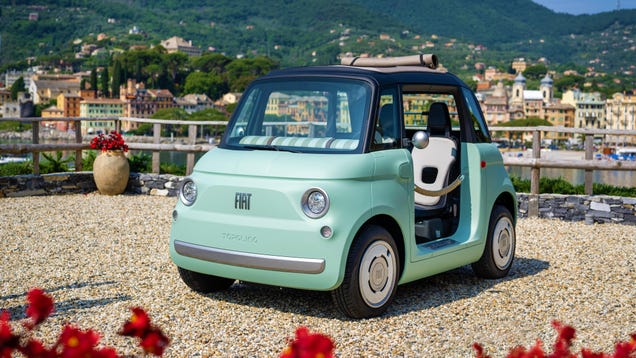The Rise of Minicars and Microcars: A Global Perspective
Understanding the Global Popularity of Minicars
Minicars and microcars have become a significant part of the automotive landscape in Europe and Asia, where compact vehicles are not just a trend but a necessity. These small cars are designed to navigate tight urban spaces, offering a practical solution to the challenges of city driving. In countries like France and Japan, where parking is at a premium and fuel efficiency is paramount, these vehicles have found a loyal following. According to a 2022 report by the European Automobile Manufacturers Association, sales of compact cars increased by 15% in Europe, highlighting a growing preference for smaller, more efficient vehicles.
In contrast, the United States has historically been resistant to the allure of minicars. Cultural attitudes towards vehicle size, safety perceptions, and a preference for larger SUVs and trucks have contributed to this phenomenon. The average American car buyer often equates size with safety and status, leading to a market that favors larger vehicles. This divergence raises questions about whether the U.S. will ever embrace the microcar trend that has taken root elsewhere.
Why Minicars Struggle in the U.S. Market
Several factors contribute to the challenges faced by minicars in the U.S. market. One of the most significant is the regulatory environment. U.S. safety regulations are stringent, often making it difficult for manufacturers to produce smaller vehicles that meet these standards without compromising on design and functionality. For instance, the National Highway Traffic Safety Administration (NHTSA) has specific crash test requirements that many microcars struggle to pass due to their size and weight.
Moreover, consumer perception plays a crucial role. Many American drivers associate larger vehicles with safety and capability, leading to a reluctance to consider smaller alternatives. A 2023 survey by the Automotive Research Institute found that 68% of respondents felt safer in larger vehicles, which further entrenches the preference for SUVs and trucks.
The Electric Vehicle Revolution and Its Impact
The rise of electric vehicles (EVs) presents a unique opportunity for minicars and microcars to gain traction in the U.S. market. As environmental concerns grow and the demand for sustainable transportation increases, manufacturers are beginning to introduce electric versions of these compact cars. The Citroën Ami, for example, is a small electric vehicle that has gained popularity in Europe for its affordability and ease of use in urban environments.
In the U.S., however, the acceptance of electric minicars remains limited. While there is a growing interest in EVs overall, the market is still dominated by larger electric SUVs and sedans. According to a 2023 report from the International Energy Agency, electric SUVs accounted for over 50% of all EV sales in the U.S., indicating a clear preference for larger vehicles even in the electric segment.
Innovative Solutions and Future Prospects
Despite the challenges, there are innovative solutions on the horizon that could pave the way for minicars in the U.S. market. Companies are exploring alternative ownership models, such as car-sharing and subscription services, which may make smaller vehicles more appealing to consumers who prioritize convenience over ownership. Additionally, urban planning initiatives that promote compact living and sustainable transportation could create a more favorable environment for minicars.
For example, cities like San Francisco and New York are investing in infrastructure that supports electric vehicles, including charging stations and dedicated parking for smaller cars. These initiatives could help shift public perception and encourage more drivers to consider the benefits of owning a microcar.
The Future of Minicars in America
While the road ahead for minicars in the U.S. may be challenging, the potential for growth exists. As urbanization continues to rise and environmental concerns become more pressing, American consumers may begin to reevaluate their preferences. The success of electric minicars in other markets serves as a testament to the viability of these vehicles, and with the right strategies, they could eventually carve out a niche in the American automotive landscape.
In conclusion, while minicars and microcars face significant hurdles in the U.S., the evolving automotive landscape, driven by electric vehicle technology and changing urban dynamics, may offer new opportunities for these compact vehicles. As manufacturers innovate and adapt to consumer needs, the future of minicars could be brighter than ever.

